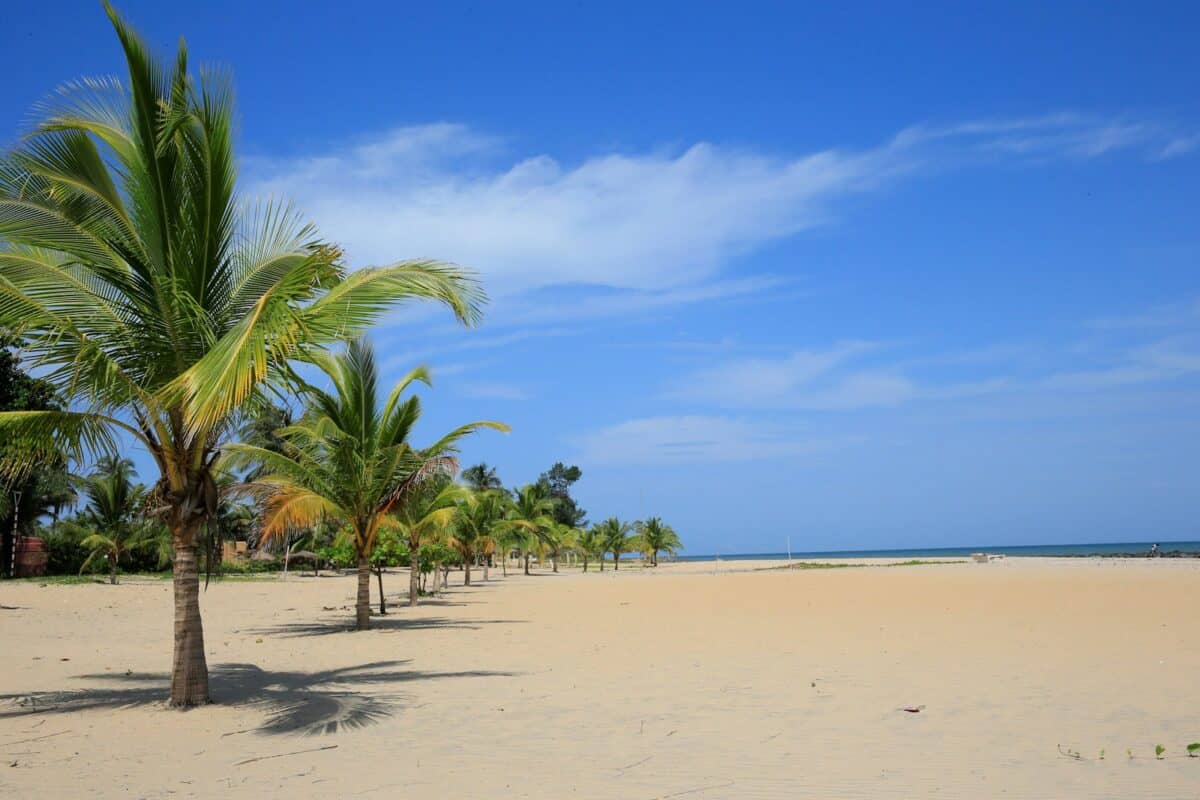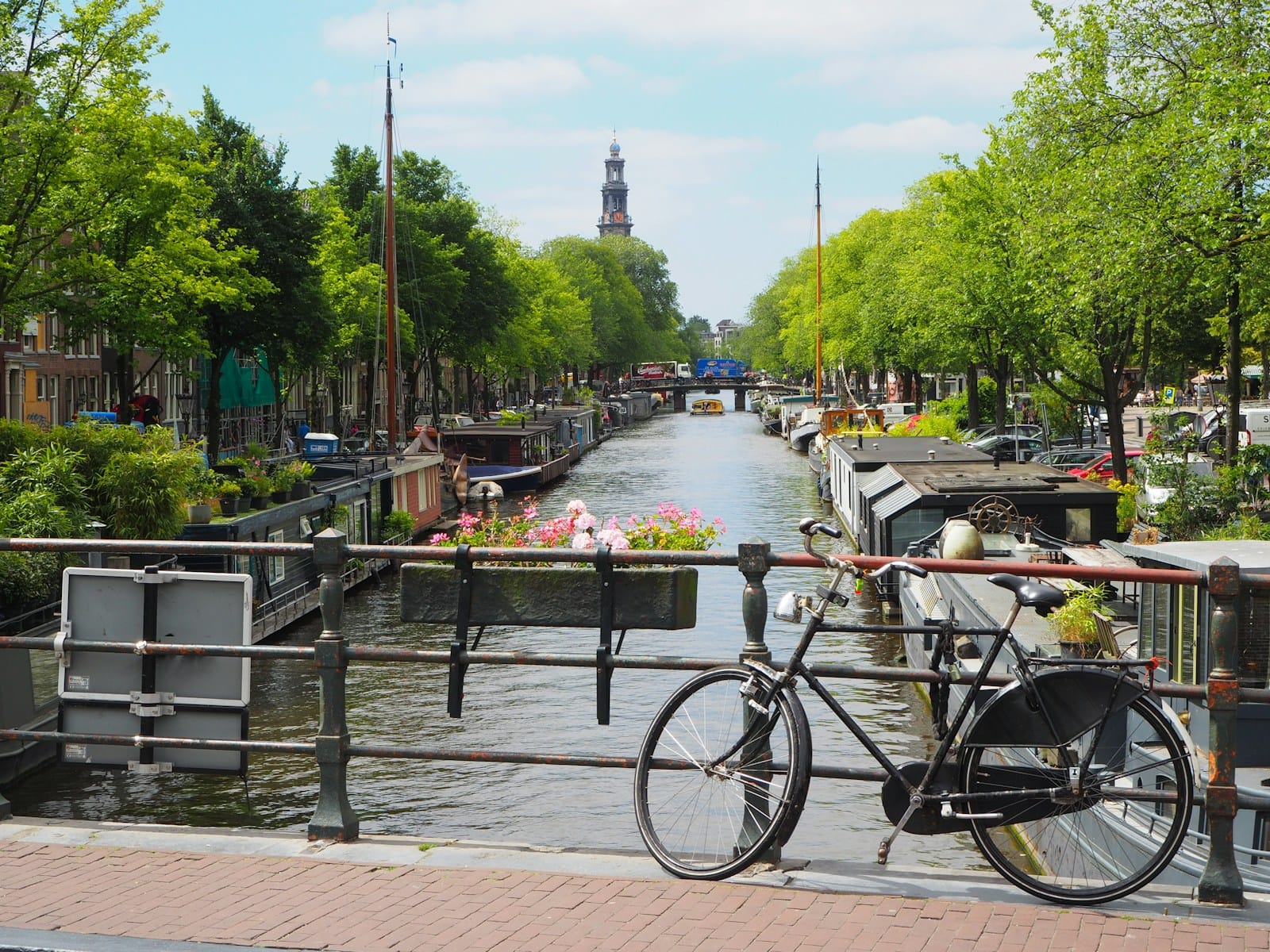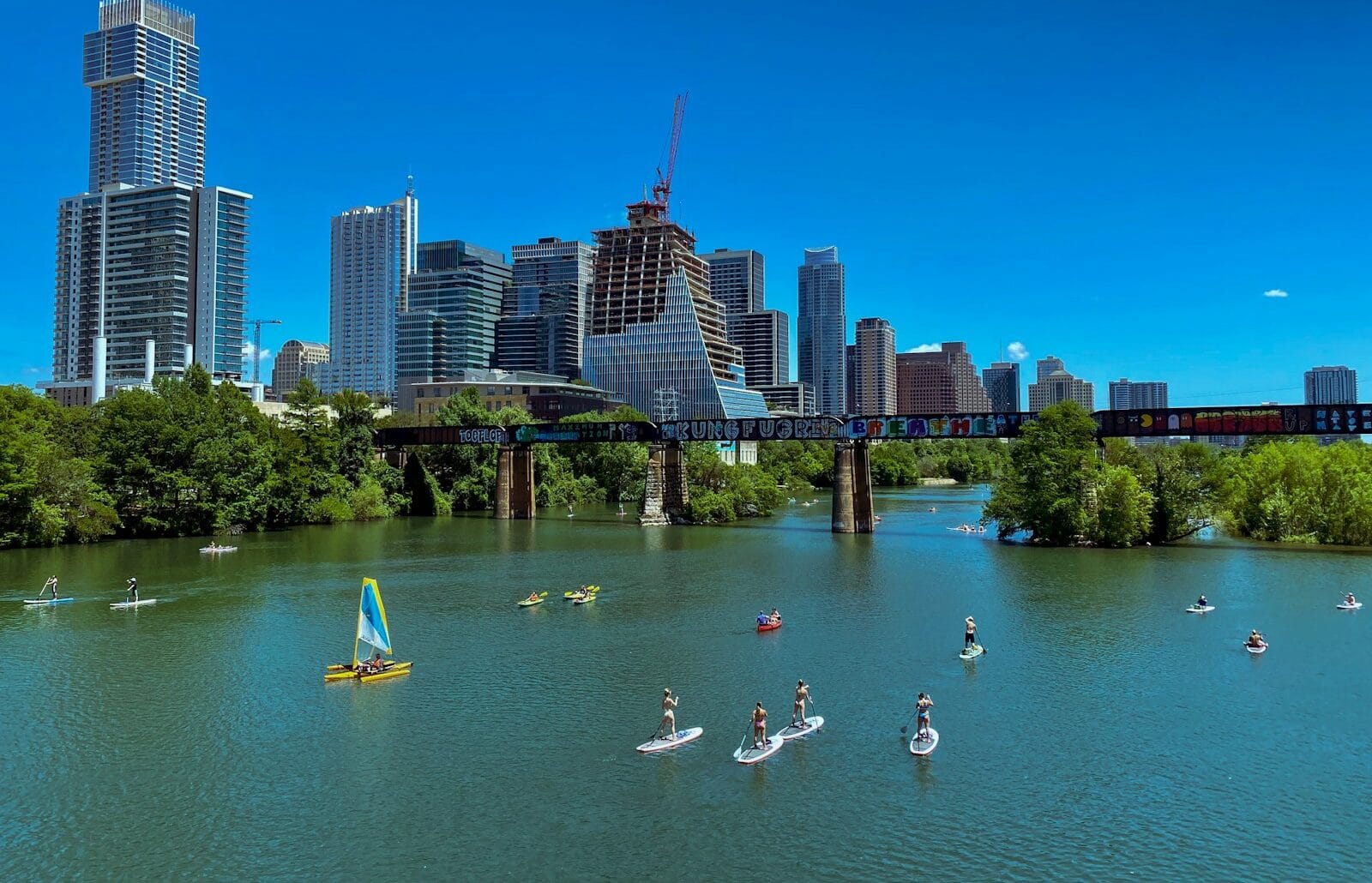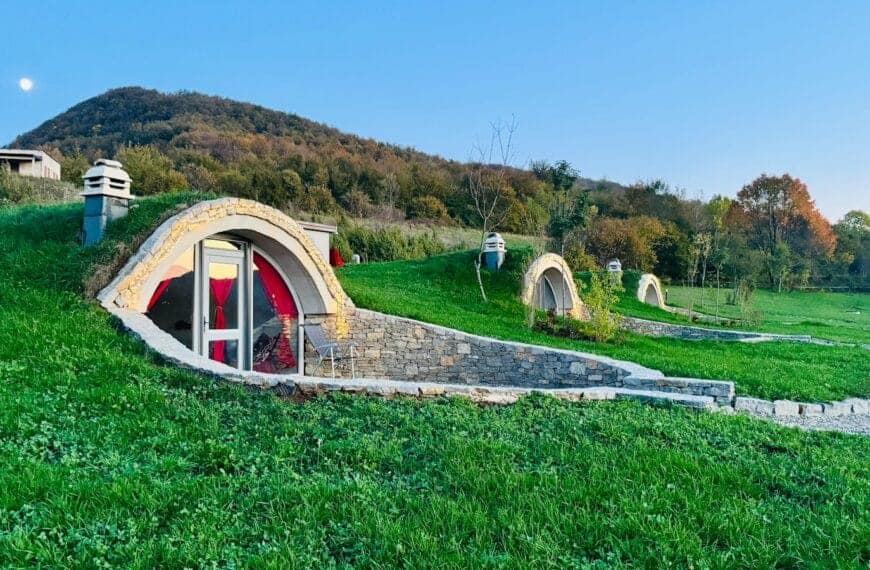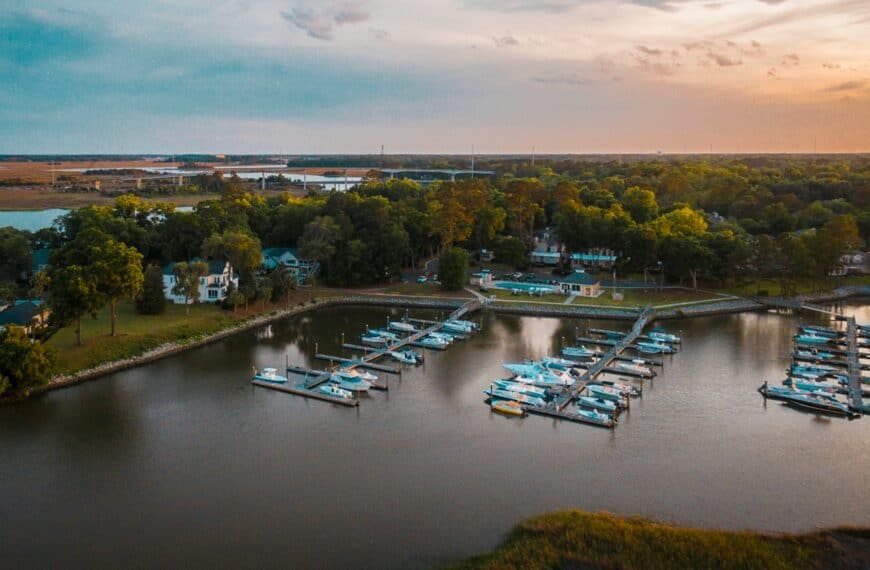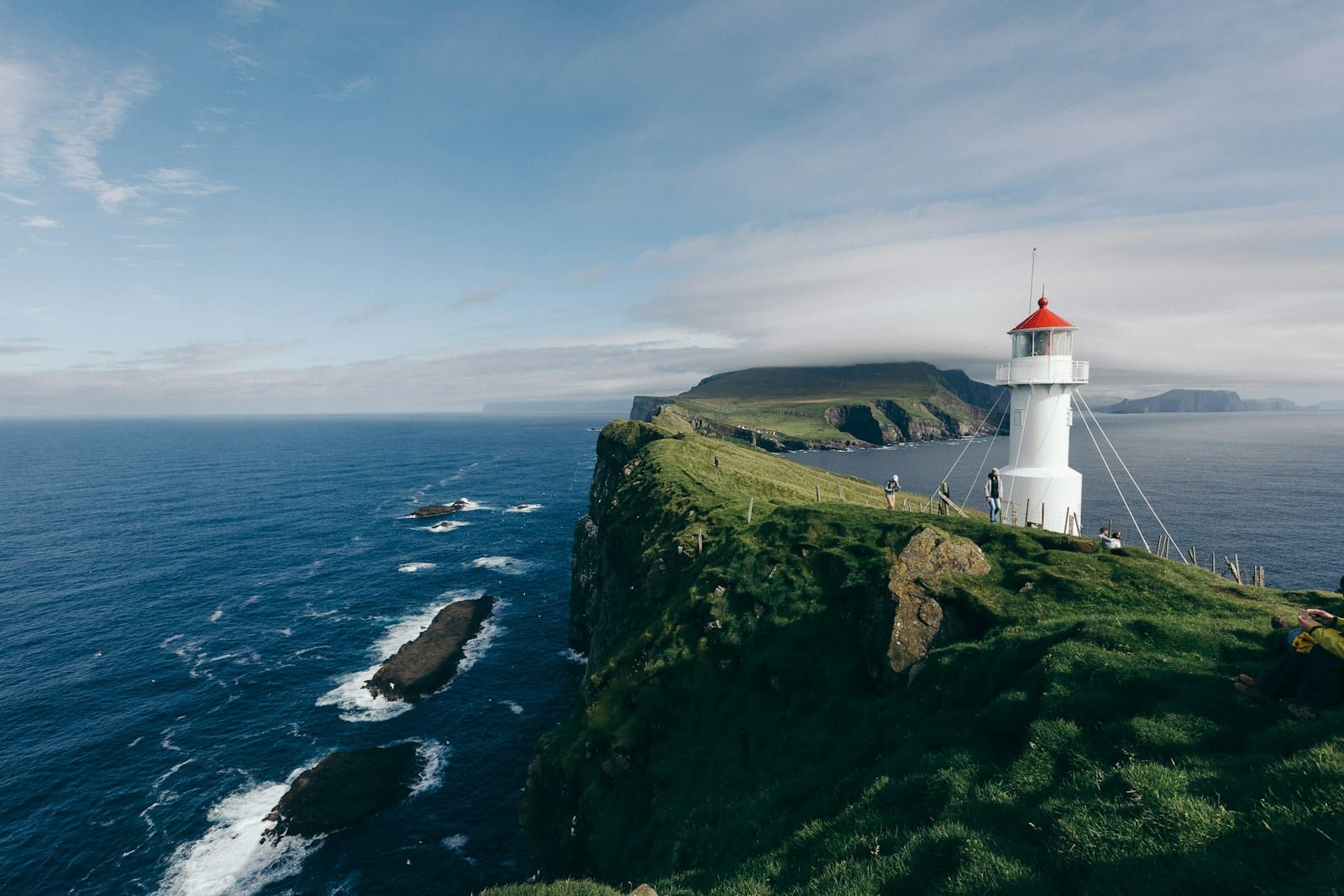Gambia Travel Guide: River Life, Culture & Coastal Serenity
Intro to Gambia Travel Guide
The Gambia may be Africa’s smallest mainland country, but its impact on travelers is unforgettable. Stretching along the Gambia River, this narrow nation pulses with vibrant culture, lush mangroves, wildlife-rich reserves, and sun-drenched Atlantic beaches — all packed into a destination that’s easy to explore.
Start planning your adventure with our complete Gambia travel guide — discover where to go, what to do, and how to experience this West African gem through local rhythms and riverfront magic.
Where to Go in Gambia
Banjul | Brikama | Farafenni | Gunjur | Janjanbureh | Kanifing | Kerewan | Kuntaur | Mansa Konko | Soma | Serekunda | Tanji
💡Quick Facts:
Destination: The Gambia
Continent: Africa
Country: The Gambia (Country)
Administrative Division: 5 regions + Banjul (capital territory)
Area: 11,295 km²
Population: ~2.8 million
Density: ~248 people per km²
Capital: Banjul
Regions/Subregions: Greater Banjul Area, Western Region, Lower River, Upper River, Central River, North Bank
Official & Regional Languages: English (official), Mandinka, Wolof, Fula, Jola, Serer
Currency: Gambian Dalasi (GMD)
Time Zone(s): Greenwich Mean Time (GMT) – no daylight saving
Airports: Banjul International Airport (BJL)
Climate: Tropical – distinct dry (Nov–May) and rainy (June–Oct) seasons
Known For: River Gambia, eco-tourism, beach resorts, Kunta Kinteh Island (UNESCO), birdwatching, Mandinka culture, welcoming hospitality
🛂Arrival Info:
– Visa-free entry for up to 90 days for nationals of the EU, UK, U.S., ECOWAS countries, and several others
– Others may need a visa-on-arrival (check embassy confirmation before travel)
– Passport must be valid for at least 6 months with at least one blank page
– Gambian Immigration Information
💉Health Info:
– Required vaccine: Yellow fever (if arriving from a risk country)
– Recommended vaccines: Hepatitis A, B, typhoid, rabies (for rural areas), and malaria prophylaxis
– Health facilities are basic outside of Banjul and major resorts
– Bring prescription medications and mosquito repellent
– Ministry of Health – Gambia
✅ Check travel insurance options for travel emergencies, delays, and medical needs abroad — get coverage here
✅ Stay Informed with Official Updates: World Health Organization – International Travel and Health | Travel health updates
🚨Travel Advisory:
– Generally safe, but petty theft and scams may occur in tourist zones
– Political tensions are rare but keep informed of local news
– Female travelers should be aware of unwanted attention in beach areas
– Avoid isolated areas after dark and do not flash valuables
✅ Stay Informed with Official Updates: US Travel Advisory | UK Foreign Travel Advice
📅Holidays:
– Independence Day (February 18): Celebrated with parades and national pride
– Tobaski (Eid al-Adha) & Koriteh (Eid al-Fitr): Widely celebrated with feasts and gatherings
– Christmas (December 25): National holiday with church services and family celebrations
– Roots Homecoming Festival (periodic): Diaspora and cultural event honoring Kunta Kinteh legacy
– Assumption Day (August 15): Catholic celebration observed nationally
💰Visitor Info:
– Currency: Gambian Dalasi (GMD); cash is king – bring small denominations
– ATMs available in cities and resort areas but often unreliable or limited
– Credit card acceptance is rare; some hotels take Visa or MasterCard with surcharges
– Tipping expected: 10% in restaurants or round up for services
– Budget: $30–$50/day | Mid-range: $60–$100/day | Luxury: $150+/day
✈️Airports:
– Banjul International Airport (BJL): Only international gateway, ~24 km from Banjul city
– Seasonal charter flights from Europe; regular service from Dakar, Casablanca, and Brussels
– Airport taxis to tourist areas (Kololi, Senegambia, Bakau) range $15–$25
– Arrivals can be chaotic — pre-arranged hotel transfers recommended
✅ Delayed or canceled flight? Check if you’re eligible for compensation
🚍Transport:
– Taxis are common and affordable; negotiate fare in advance
– Shared minibuses (“gele-gele”) connect towns and villages – cheap but crowded
– No official rail network
– Car rental available but road conditions can be poor outside main areas
– Ferries and river pirogues operate across the Gambia River, especially Barra–Banjul route
– Left-hand driving; international licenses accepted
✅ Book reliable airport transfers and in-city rides in advance. Reserve your ride here
📶Connectivity:
– SIM cards from Africell, QCell, and Gamcel available at the airport or local shops
– Data is cheap, and 4G coverage is decent in urban areas
– eSIM support is limited — verify before arrival
– Public Wi-Fi rare and often unreliable; most hotels offer basic access
– Roaming can be expensive — a local SIM is strongly recommended
✅ Stay connected abroad with affordable eSIM data packs. Get your eSIM here
📜Laws & Etiquette:
– Legal drinking age: 18; alcohol is sold in licensed bars and shops
– Public intoxication is frowned upon
– Dress modestly in villages and religious areas; beachwear is fine at resorts
– Homosexuality is illegal – LGBTQ+ travelers must use discretion
– Respect for elders, greetings, and hospitality (teranga-style) are central to social norms
– Avoid photographing military sites or locals without permission
🛡️Emergency Info:
– Emergency numbers: Police 117, Ambulance 116, Fire 118
– U.S. Embassy Banjul
– UK High Commission
– Tourist police available in coastal zones and hotels
✅ Use embassy locator tools: Embassies Worldwide
🌦️Weather:
– Best time to visit: November to April (dry season, cooler temps, ideal for beaches)
– Rainy season: June to October – hot, humid, and green with occasional flooding
– Average daily temperatures range from 24°C (75°F) to 32°C (90°F)
– Bring light clothing, sun protection, and mosquito repellent year-round
✅ Stay prepared—check the weather forecast for your destination — Weather Forecast
Gambia by Region – Where to Go
Though compact, The Gambia offers diverse micro-regions shaped by riverbanks, wetlands, and coastal life.
Greater Banjul Area
The capital region blends urban buzz with nearby beach towns like Bakau and Kololi. Explore Albert Market, visit the National Museum, and unwind on Cape Point’s quiet shorelines. This is the country’s gateway and most developed area for tourism.
Kombo South (Coastal Region)
South of Banjul, Kombo South features iconic beach hubs like Sanyang and Tanji. Known for golden sands, laid-back lodges, and birdwatching, it’s a paradise for nature-lovers and relaxation seekers alike.
Lower River Region
East of the coast, this central belt follows the Gambia River through rice fields, forest parks, and small villages. Janjanbureh (formerly Georgetown) is the region’s cultural anchor and home to key historical sites tied to the transatlantic slave trade.
Central River Region
Lush and biodiverse, this zone includes Kunkilling Forest Reserve and wetlands that teem with birdlife and monkeys. Boat tours, eco-lodges, and cultural villages make it ideal for slow, immersive travel.
Upper River Region
The far east of the country offers deeper off-the-grid exploration with hidden waterfalls, traditional Mandinka villages, and proximity to Senegal’s southern frontier. Perfect for travelers who want a truly local, untouristed experience.
Top Places to Visit in The Gambia
From colonial forts to sacred forests and serene beaches, The Gambia delivers culture and biodiversity at every bend.
Cultural Towns & Historic Sites
- Banjul: The capital’s blend of markets, museums, and colonial-era architecture offers a glimpse into the country’s evolving identity.
- Janjanbureh: One of West Africa’s oldest towns and a key site in the country’s slavery history, with island tours and old trading posts.
Wildlife & Eco Destinations
- Abuko Nature Reserve: A pocket-sized forest just inland from the coast, home to monkeys, antelope, and 270+ bird species.
- Kiang West National Park: Located in the Lower River Region, this park is a hotspot for birdwatchers and wetland explorers.
Beach Escapes
- Sanyang Beach (Paradise Beach): Soft sands and friendly beach bars surrounded by palms and peaceful dunes.
- Tanji Fishing Village: Colorful boats, smoking fish huts, and daily life on the Atlantic shore.
River Adventures
- Kunta Kinteh Island: A UNESCO World Heritage site tied to The Gambia’s slave trade history, accessible via riverboat from Albreda.
- Tendaba Camp: A top base for river safaris, mangrove canoeing, and hippo spotting upriver.
How to Choose Where to Go in The Gambia
Whether you want nature, heritage, or coastal calm, here’s how to plan your trip goals around Gambia’s compact but diverse layout:
- For culture and history: Base yourself in Banjul or visit Janjanbureh for slave-era heritage and Mandinka culture.
- For relaxing beaches and wildlife: Choose the Sanyang–Tanji coastal stretch for a blend of ocean, forest, and local rhythms.
- For adventure and immersion: Travel upriver to Tendaba, the Central River, or the Upper River Region for village stays and wildlife encounters.
- For birdwatching and eco-travel: Base in Abuko, Kiang West, or take a multi-day trip through forest reserves and protected wetlands.
Efficient combinations:
- Banjul + Tanji + Abuko Reserve (city + beach + nature)
- Kololi + Janjanbureh (coast + culture)
- Tendaba + Kiang West + Kunta Kinteh Island (river + wildlife + heritage)
How to Get Around The Gambia
Travel within The Gambia is straightforward but requires flexibility — most routes follow the river axis from west to east.
- Shared Taxis & Bush Taxis: The most common mode of local transport. Cheap, crowded, and cover short to medium distances.
- Minibuses: Connect towns along the Trans-Gambia Highway. Best for regional travel but not always punctual.
- Car Rentals & Private Drivers: Ideal for longer journeys, especially upriver or into national parks. Roads can be rough outside urban areas.
- River Ferries & Pirogues: Crossings at Barra and Georgetown offer a local experience. River trips to Kunta Kinteh Island are a must.
- Airport Transfers: Most visitors land at Banjul International (BJL) and take pre-booked rides to beach hotels or guesthouses.
Apps & Tips: Offline maps (Maps.me), Google Translate for local phrases, and WhatsApp for communicating with guesthouses and drivers.
Travel Budget & Costs in The Gambia
Gambia is one of Africa’s most budget-friendly destinations — you can travel comfortably without spending much.
Budget Travel ($25–$45/day):
- Guesthouses or local lodges: $10–$25 per night
- Street food or beach cafés: $3–$7 per meal
- Shared taxis and river ferries: $1–$5
- Many activities are nature-based or included with accommodations
Mid-Range ($60–$100/day):
- Eco-lodges or beach resorts: $40–$80
- Guided birding or river excursions: $20–$40
- Restaurant meals with drinks: $10–$20
- Transfers with private driver: $15–$30 per trip
Luxury ($150–$250+/day):
- Boutique or all-inclusive resorts: $120–$250
- Private guided tours: $100+ per day
- Seafood dinners, massages, and premium transportation
Money-saving tips:
- Eat where locals eat — fish, rice, and domoda are cheap and filling
- Book eco-lodges with activities included
- Travel off-season (May–June or October) for better rates and fewer tourists
Best Time to Visit The Gambia
The Gambia has a tropical climate with distinct dry and rainy seasons — timing your visit can shape your experience.
Dry Season (November–May):
Best for beach holidays, birdwatching, and outdoor travel. Temperatures range from 80–95°F (27–35°C). Peak season for tourism.
Green Season (June–October):
Rains arrive in short, dramatic bursts. Expect lush landscapes and lower prices. Ideal for photography and fewer crowds — but some rural roads may become impassable.
Festival Highlights:
- Roots Homecoming Festival (May): Honors Kunta Kinteh’s legacy with parades, drumming, and heritage tours.
- International Bird Festival (December): Held in Tendaba and Abuko, it draws wildlife enthusiasts from around the world.
The best time to visit The Gambia is between November and March for dry skies, active wildlife, and comfortable travel conditions.
Must-See Experiences in The Gambia
These unforgettable experiences help travelers dive into The Gambia’s natural rhythms and living heritage.
- Cruise the Gambia River: Explore mangroves, hippo pods, and riverside villages by dugout canoe or boat safari.
- Visit Kunta Kinteh Island: Learn about the transatlantic slave trade and the real-life figure behind “Roots.”
- Explore Tanji Village & Fish Market: Watch fishermen haul in their daily catch and enjoy smoked fish snacks.
- Go Birdwatching in Abuko or Kiang West: The Gambia is home to over 560 species of birds — paradise for ornithologists.
- Relax on Paradise Beach (Sanyang): A stretch of quiet shoreline perfect for hammocks, local music, and sunset swims.
- Dance at a Drumming Circle: Engage in spontaneous local music sessions and storytelling rituals.
- Take a Cooking Class in Brikama: Learn to make domoda (peanut stew) or benachin (jollof rice) with home cooks.
- Join the Roots Festival or local wrestling match: Community traditions blend sport, rhythm, and identity in rural towns.
Book immersive Gambia tours and experience unforgettable things to do in The Gambia — from sacred drumming rituals and wildlife river treks to floating markets and forest village adventures.
Best Travel Itineraries in The Gambia
With compact geography and rewarding variety, you can cover a lot in a short Gambia itinerary. Here are three suggested routes:
7-Day Gambia Highlights
- Day 1–2: Kololi or Sanyang Beach — Relax, birdwatch, and enjoy local seafood
- Day 3: Tanji Village and Abuko Nature Reserve
- Day 4–5: Janjanbureh & Kunta Kinteh Island tour
- Day 6: Tendaba River Camp — mangrove safari
- Day 7: Return to Banjul with stop in Brikama for crafts and local food
10-Day Gambia & River Immersion
- Days 1–2: Kololi + Banjul city tour
- Days 3–4: Sanyang + Tanji for coastal life
- Days 5–7: Janjanbureh and Central River Region (cultural immersion, nature walks)
- Days 8–10: Kiang West National Park + Tendaba (eco-lodges, river wildlife)
14-Day Deep Culture & Nature Trail
- Week 1: Beaches (Kololi, Sanyang), day trips to Banjul, Abuko, and Brikama
- Week 2: Inland journey to Janjanbureh, overnight stops at Kiang West, and rural stays in the Upper River Region. Wrap with a return to the coast via ferry or private car.
Local Cuisine & Culinary Experiences
Gambian food is flavorful, grounded in local ingredients, and shared communally. From beachside grilled fish to home-cooked stews, meals offer insight into the culture.
- Domoda: A rich peanut-based stew made with meat or vegetables, served with rice.
- Benachin (One Pot): Gambia’s version of jollof rice — spicy, hearty, and often cooked with fish or chicken.
- Yassa: Marinated onions and mustard-based sauce served over meat or fish.
- Chere: Couscous-like millet, often paired with soup or sauce.
- Grilled Barracuda or Snapper: Found at beach cafés along the coast — fresh, smoky, and delicious.
- Wonjo Juice: A tart hibiscus-based drink often served cold.
- Baobab Juice (Bouye): Creamy and naturally sweet — great for cooling off on hot afternoons.
Culinary Tip: Visit Brikama market for spices, dried fish, and produce. Or join a local cooking session offered by eco-lodges or home-based chefs near Sanyang or Janjanbureh.
Travel Safety & Cultural Etiquette in The Gambia
The Gambia is generally safe for travelers and known for its hospitality. A few precautions will help ensure a smooth trip.
Safety Overview
- Petty theft can occur in crowded areas — keep bags secure and avoid isolated beaches after dark.
- Roads can be rough, especially inland — always check conditions before long drives.
- Water hygiene varies — stick to bottled water and avoid ice unless from trusted sources.
- Beach touts (often called “bumsters”) may approach tourists — be firm but polite if uninterested.
Cultural Etiquette
- Greet with respect — handshakes and inquiries about family are common.
- Dress modestly when visiting villages or religious sites.
- Photography: Always ask before taking portraits, especially of elders or in rural areas.
- Friday is a holy day — expect slower business hours and dressed-up locals heading to mosques.
Health Notes
- Malaria prophylaxis is strongly recommended.
- Yellow fever vaccination is required if arriving from an endemic country.
- Pack sunscreen, mosquito repellent, and a small travel pharmacy.
Where to Go Next – Pair Gambia with These Destinations
Thanks to regional flights and road links, The Gambia pairs well with these West African neighbors:
- Senegal: Bordering The Gambia on all sides, Senegal is a natural twin destination. Explore Dakar, Saint-Louis, or Casamance — all reachable by road or ferry.
- Cape Verde: Combine Gambia’s river landscapes with Cape Verde’s volcanic islands and Creole culture. Direct flights operate from Banjul.
- Guinea-Bissau: For off-the-path travelers, Guinea-Bissau offers untouched nature and island escapes — accessible via connecting flights or overland via Senegal.
- Sierra Leone: A short flight south leads to pristine beaches, lush mountains, and historic Freetown.
Senegal Travel Guide | Cape Verde Travel Guide | West Africa Travel Guide
Final Planning Checklist for The Gambia
- Choose your base: coast (Kololi/Sanyang) or inland (Janjanbureh/Tendaba)
- Reserve eco-lodges, ferry tours, and birdwatching trips early (especially in dry season)
- Apply for visa (if needed) and check Yellow Fever requirements
- Pack modest clothing, waterproof shoes, sun hat, and repellent
- Confirm vaccinations and bring anti-malarial tablets if prescribed
- Download offline maps and currency converters
- Arrange airport transfers with hotels or guides in advance
- Bring cash (dalasi) and backup payment options — ATMs are limited outside cities
- Learn a few greetings in Mandinka or Wolof for respectful interaction
- Back up all documents (passport, travel insurance, entry forms)
Explore The Gambia with confidence using our trusted tips, local insights, and region-by-region planning tools.
For more expert travel tips, practical strategies, and trusted tools — visit our Homepage and get inspired for your next trip.

